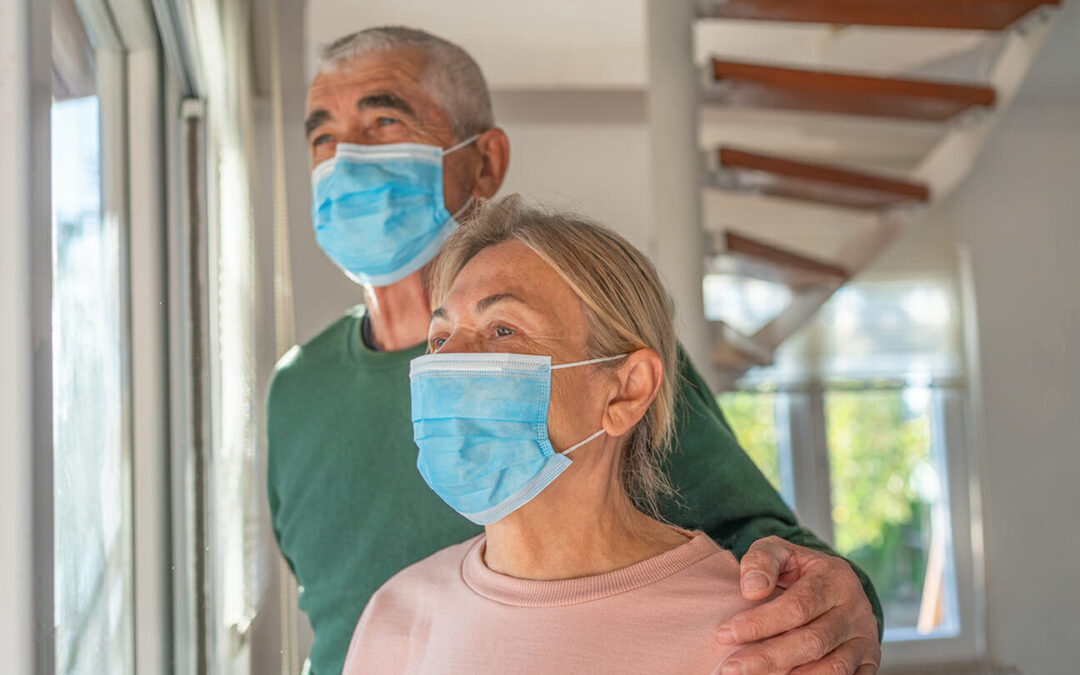CLINICAL DAILY NEWS – MARCH 1, 2024
New guidance issued Friday by the U.S. Centers for Disease Control and Prevention recommends that Americans who test positive for COVID-19 no longer need to routinely stay home for five days.
Instead, the CDC recommends “returning to normal activities when, for at least 24 hours, symptoms are improving overall, and if a fever was present, it has been gone without use of a fever-reducing medication.”
This is the first time the agency has loosened its COVID isolation guidelines since 2021. The thinking behind it is to come more in line with advisories for other common respiratory infections.
“The new guidance brings a unified approach to addressing risks from a range of common respiratory viral illnesses, such as COVID-19, flu and RSV, which can cause significant health impacts and strain on hospitals and health care workers,” the CDC said in a statement announcing the change.
Once people with COVID do return to “normal activities,” they should still take precautions over the next five days to help stop spreading the infection to others.
Those precautions include “enhancing hygiene practices, wearing a well-fitting mask, keeping a distance from others and/or getting tested for respiratory viruses [including COVID-19],” the agency said.
Why the changes now?
According to CDC Director Dr. Mandy Cohen, the update “reflects the progress we have made in protecting against severe illness from COVID-19. However, we still must use the commonsense solutions we know work to protect ourselves and others from serious illness from respiratory viruses — this includes vaccination, treatment and staying home when we get sick.”
Some recommendations remain unchanged, including staying up to date on vaccinations. That includes this week’s CDC recommendation that Americans 65 and older receive another COVID booster shot this spring, to help maintain immunity.
The guidance also recommends “practicing good hygiene by covering coughs and sneezes, washing or sanitizing hands often, and cleaning frequently touched surfaces,” and seeking out cleaner air by “bringing in more fresh outside air, purifying indoor air or gathering outdoors.”
The agency noted that COVID-19 is far less of a threat than it was during the pandemic, because it is “far less likely to cause severe illness because of widespread immunity and improved tools to prevent and treat the disease.”
The new guidance came after some states initiated similar changes, and the CDC noted that those states “have not seen increased hospitalizations or deaths related to COVID-19.”
Lower rates of COVID hospitalizations were among the reasons California shortened its five-day isolation recommendation in January, urging people to stay home until they are fever-free for 24 hours and their symptoms are mild and improving. Oregon made a similar move last May.
Michael Osterholm, an infectious disease expert at the University of Minnesota, said the new recommendations make sense, now that the urgency of the pandemic has passed.
“Public health has to be realistic,” he told the Washington Post recently. “In making recommendations to the public today, we have to try to get the most out of what people are willing to do. … You can be absolutely right in the science and yet accomplish nothing because no one will listen to you.”
Not everyone is happy with the new guidance, however.
Loosening the guidelines “sweeps this serious illness under the rug,” Dr. Lara Jirmanus told the Post recently. She’s a clinical instructor at Harvard Medical School and a member of the People’s CDC, a coalition of health care workers, scientists and advocates focused on reducing the harmful effects of COVID-19.
Public health officials should treat COVID differently from other respiratory viruses because it’s deadlier than the flu and poses a risk for lingering symptoms known as Long COVID, she said. Nearly 7% of Americans report having lingering COVID symptoms such as fatigue, trouble breathing, brain fog and joint pain, CDC data show.
Doctors say the best way for sick people to protect their communities is to mask or avoid trips outside the home if infected.
“You see a lot of people with symptoms — you don’t know if they have COVID or influenza or RSV — but in all three of those cases, they probably shouldn’t be at Target, coughing and looking sick,” Dr. Eli Perencevich, an internal medicine professor at the University of Iowa, told the Post.
More information
Visit the U.S. Centers for Disease Control and Prevention for current guidance on COVID.
SOURCE: U.S. Centers for Disease Control and Prevention, news release, March 1, 2024, Washington Post
THINKING OF BUYING OR SELLING?
Let the RCFE Resource team of professionals bring proven expertise to help you get the highest price for your Assisted Living or Health Care properties. We are pleased to offer a complimentary, no obligation valuation of your home and business. Please call today for your FREE consultation.
Michelle (949) 397-4506 | michelle@RCFEresource.com
Melvyn (949) 500-3630 | melvyn@RCFEresource.com



